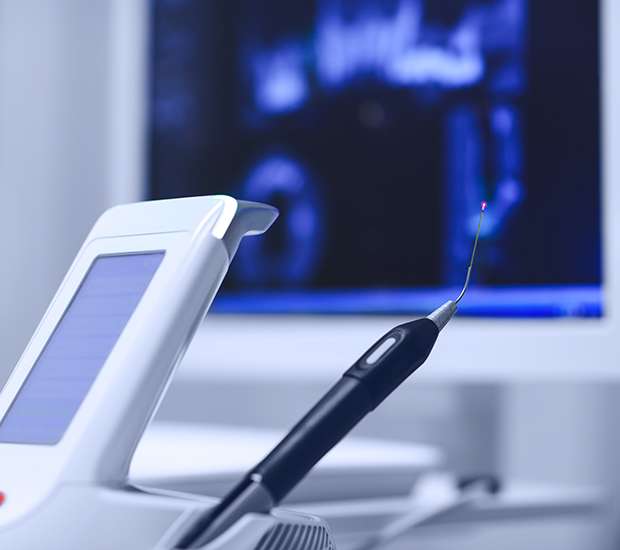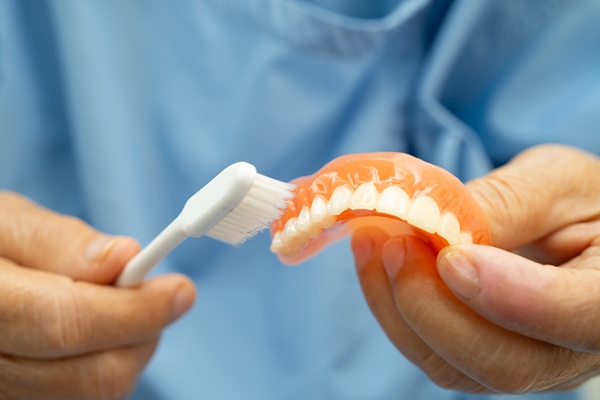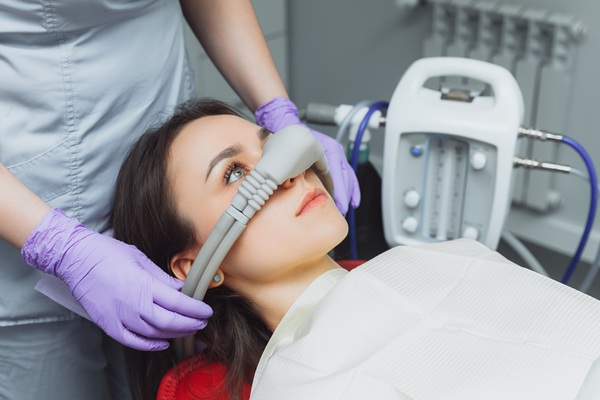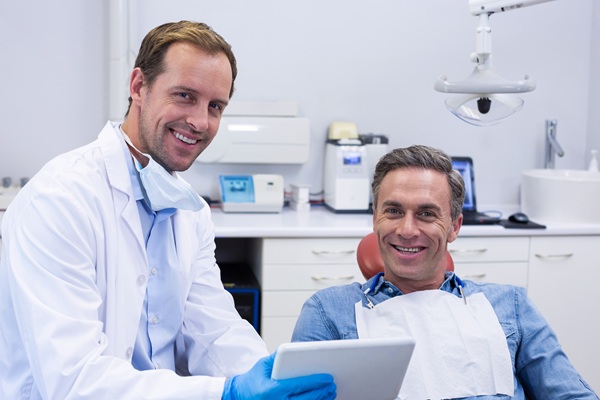LANAP Laser Gum SurgeryAnn Arbor, MI
LANAP® laser gum surgery is an effective treatment used to fight gum disease. By using a specialized laser, it is possible to remove bacteria, infection, and decay from beneath the gums and tooth roots, eliminating the disease or stopping its progression. This protocol can treat all stages of gum disease, from early gingivitis to advanced periodontitis.
LANAP laser gum surgery is available at Shiva G. Rad, D.D.S. in Ann Arbor and the surrounding area. Our team can assess your condition and determine a proper diagnosis and treatment, using pain-free laser technology. Call us today at (734) 436-0817 to schedule an appointment or learn more about our services.
What is LANAP® Laser Gum Surgery?
LANAP laser gum surgery is a non-invasive gum disease treatment that uses a specific dental laser, the PerioLase® MVP-7™. The LANAP protocol is the first of its kind cleared by the FDA for “True Regeneration.” As such, this laser treatment allows for the regrowth of new cementum, new periodontal ligament, and new alveolar bone, the three components needed for full oral function.
LANAP, which stands for laser-assisted new attachment procedure, was developed by Gregg and McCarthy in 1990. A 2018 study found that the LANAP protocol is a long-term solution focusing on bactericidal and detoxification effects while also aiming to diminish or eliminate the disease. Since its inception, LANAP technologies have been used in dental offices throughout the U.S.
"As such, this laser treatment allows for the regrowth of new cementum, new periodontal ligament, and new alveolar bone, the three components needed for full oral function."
Why Dentists Perform Laser Gum Surgery
Laser gum surgery primarily intends to help treat gum disease. About 85% of adults in the U.S. suffer from some form of gum disease. Of those adults, only 60% know they have the disease. Also, only three percent of those with moderate to severe levels of gum disease will accept treatment. Gum disease progresses and, when left untreated, can develop into advanced periodontitis and, eventually, tooth and bone loss.
Patients with moderate to severe gum disease can benefit most from LANAP. Those with dental anxiety or fear of undergoing surgery may also benefit from laser treatment because no tools, drills, or scalpels are needed. Laser treatments have been used to treat gummy smiles, for crown lengthening, and for many other procedures in place of dental tools or extraction.
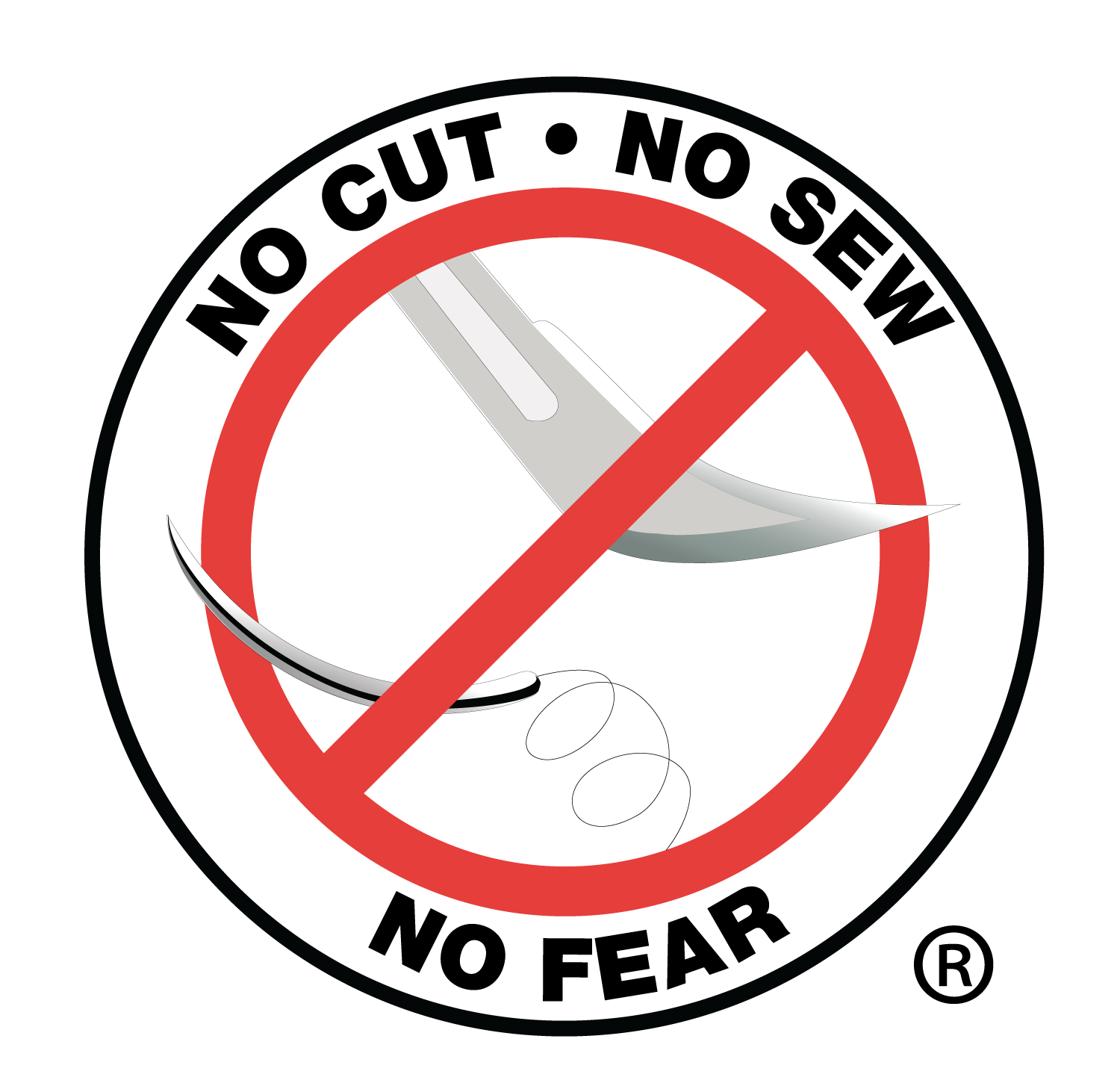
"Gum disease progresses and, when left untreated, can develop into advanced periodontitis and, eventually, tooth and bone loss."
Benefits of Laser Gum Surgery
The dentist can use LANAP to treat many oral health conditions involving both the hard and soft tissues of the mouth. The LANAP protocol provides numerous benefits, including:
Healthy gums with minimal recession
When the gums are cut, the tissue shrinks and can show more of the tooth root. Since the LANAP protocol does not cut the gums, the tissue stays intact.
Less postoperative pain
Using the PerioLase MVP-7 dental laser, the LANAP protocol helps avoid cutting and stitching the gums. As a result, patients usually have minimal postoperative discomfort.
Quicker recovery time
Most patients can return to their regular daily activities immediately following the procedure, which generally requires less than a 24-hour recovery period. Alternatively, following traditional scalpel and suture surgery, recovery can take two to four weeks, during which patients can experience considerable pain and swelling.
Regeneration without foreign materials
As the PerioLase laser stimulates the body’s healing response, a LANAP dentist does not have to add foreign ‘growth factors.’
Aside from physical benefits, the LANAP protocol is advantageous to those with dental anxiety or a general fear of medical surgeries and procedures. Laser technology can help remove decay and cavities, trim excess gum tissue, and remove infections caused by gum disease. Therefore, it can benefit almost all patients at any age.
"Laser technology can help remove decay and cavities, trim excess gum tissue, and remove infections caused by gum disease."
The Treatment Process
In most cases, LANAP laser treatment is done in a dental or periodontal office while a patient is under local anesthesia. This form of anesthesia keeps the treatment area numb and relaxes the patient in order to keep them steady as the laser moves throughout their mouth. Our team will begin by taking X-rays and examining the patient’s periodontal chart to ensure we move as intended.
The laser consists of a tiny fiber (about three human hairs thick), which we insert between the teeth and gums. This process quickly removes bacteria beneath them without cutting or snipping any tissue. We then clear the tooth roots, adjust the laser setting to create a blood clot, and seal the pocket. We typically treat one side or area of the mouth during each session to allow the area to heal properly.
"This process quickly removes bacteria beneath them without cutting or snipping any tissue. We then clear the tooth roots, adjust the laser setting to create a blood clot, and seal the pocket."
Recovery
Since laser gum surgery is non-invasive, it only requires a local anesthetic. Therefore, patients can drive home right after treatment and resume normal activities. We advise patients to rest and take it easy on the first day. It is important to clean out the mouth frequently and take extra care of their oral hygiene during the recovery period. However, post-treatment protocol advises against brushing or flossing for the first seven to 10 days, avoiding smoking, and following a soft-food diet. We will recommend appropriate cleaning and eating habits following the treatment.
Most patients recover within the first 24 hours of each treatment session. We may require or recommend a follow-up visit after the patient has completed their final session to assess their condition and ensure treatment went as intended. We will adjust the treatment plan accordingly and discuss the patient’s next course of action, if applicable.
"Most patients recover within the first 24 hours of each treatment session."
Call Us Today
LANAP gum surgery is a quick and painless solution to dental decay. Do not ignore the troubling signs of early gum disease. These symptoms will only progress and may result in more complications and invasive treatments in the future. Call us today at (734) 436-0817 to schedule an appointment or learn more about our services.
Check out what others are saying about our LANAP Laser Gum Surgery services on Yelp: LANAP Laser Gum Surgery Ann Arbor
Frequently Asked Questions
Q. What is the LANAP protocol?
A. The LANAP protocol, or laser-assisted new attachment procedure, is a non-invasive gum treatment involving the removal of decay and infection caused by gum disease. It gently and quickly removes the disease from around, between, and underneath the teeth into the tooth roots and gums. There is only one type of LANAP laser treatment available to date.
Q. What does the LANAP protocol do?
A. The primary goals of the LANAP protocol are to remove bacteria and infection from the gums and underlying tooth structures and help regenerate soft tissue and bone. This laser treatment allows for the regrowth of new cementum, new periodontal ligament, and new alveolar bone, the three components needed for full oral function. It also provides a non-invasive procedure for a tough oral disease, historically treated through invasive surgery.
Q. What are the top benefits of laser treatment?
A. One of the greatest benefits of laser treatment is that it eliminates or reduces fear and dental anxiety associated with oral surgery. Patients are put on a local anesthetic and typically recover within the first 24 hours, reducing time requested off work or school. Another benefit is LANAP laser treatment can be done in patients with moderate to severe periodontal disease, reducing the risk of tooth extraction, tooth loss, and other complications.
Q. How is LANAP laser gum surgery performed?
A. The dentist typically performs LANAP laser gum surgery in two sessions for two hours each. We will treat one area of the mouth during each session. We begin by taking X-rays, reviewing the patient’s chart, and examining the mouth. The thin laser fiber goes between the teeth and gums, removing bacteria from all sides and underneath the gums. We then seal the gums with a blood clot. Furthermore, any loose teeth will require splinting.
Q. What does the recovery period consist of?
A. Unlike invasive gum surgery (in which the gums are cut and stitched), laser treatments require little to no recovery time. However, there are a few adjustments patients must make during the first week, such as avoiding smoking, hard or hot foods, and brushing and flossing. We will discuss alternative cleaning and eating habits that can ensure patients heal quickly and appropriately.
Questions Answered on This Page
Q. What is LANAP laser gum surgery?
Q. Why is laser gum surgery performed?
Q. What are the benefits of laser gum surgery?
Definitions of LANAP Laser Gum Surgery Terminology
- Flap surgery
- A procedure in which a dentist cleans the roots of a tooth and repairs bone damage caused by gum disease.
- LANAP protocol
- Laser-assisted new attachment procedure is a surgical therapy for the treatment of periodontitis, intended to work through regeneration rather than resection.
- Laser dentistry
- The use of lasers to treat a number of different dental conditions.
- Laser gum surgery
- A modern surgery alternative where light energy is used to improve oral health and the smile. The laser method kills bacteria and stimulates bone growth around existing teeth.
- Non-invasive treatment
- A procedure that requires no cutting or stitching into the gum tissue or bone and little to no recovery.
- Oral inflammation
- Inflammation of the oral cavity that can occur anywhere in the mouth, including the inside of the cheeks, gums, tongue, lips, and palate.
- PerioLase
- A six-watt free-running variable pulsed dental laser featuring digital technology and seven pulse durations.
- Regeneration
- A stem cell-based regenerative medicine procedure to replace damaged or lost teeth by regrowing them from autologous stem cells.
- Scaling and root planing
- The removal of plaque, hardened tartar (calculus), and stains from a patient’s teeth and tooth roots.
- Tooth splinting
- In dental splinting, teeth are joined together using a thin fiber-reinforced wire, thereby increasing their stability. This is a factor which allows them to function normally.
